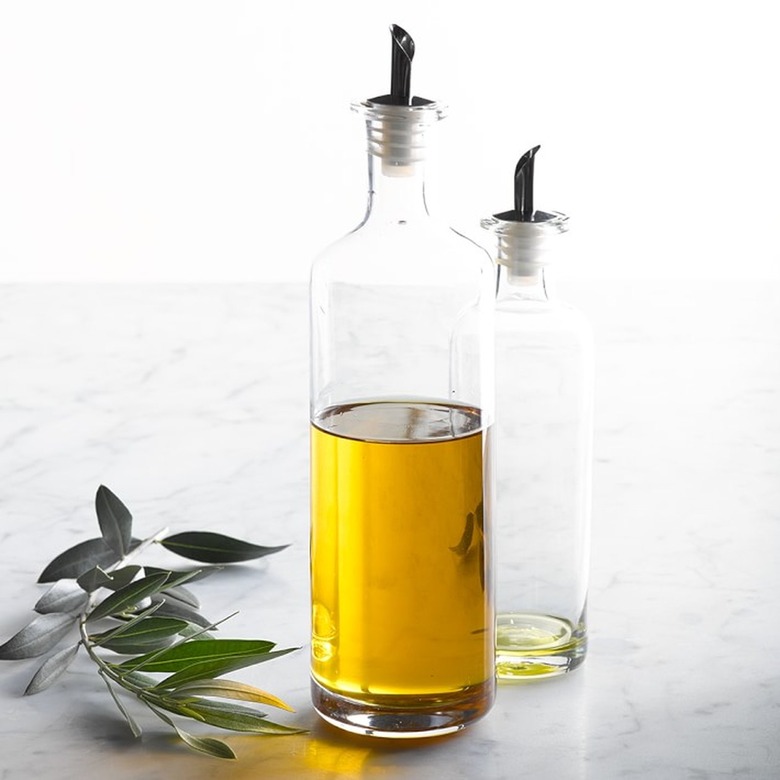How To Avoid "Olive Oil Fraud"
Did you know that 70% of the olive oil that's out there is fake? Even worse — did you know that this poser olive oil can make you feel sick (especially if you're allergic to what it's diluted with)?
In a conversation between Aishwarya Iyer, the founder and CEO of Brightland, and lifestyle site Camille Styles, we discovered that over two-thirds of the olive on store shelves is diluted, counterfeit, or rotten.
"Adulterated olive oils can contain a blend of inferior quality vegetable oils like soybean oil, sunflower oil, palm oil, or canola oil," Iyer says. "Olive oil becomes moldy when the olives have been crushed with dirt and mud. Old or rancid olive oils (often characterized by a wax crayon-like taste) are the result of inadequate storage and exposure to damaging light, heat, or air." An olive oil that tastes dirty might even contain fly larvae.
Now that we know fake olive oil exists, how do we spot it? According to Iyer, you want to look for a dark bottle that protects the oil from sunlight. Checking the harvest date to ensure that the olives were harvested within 18-20 months of your purchase is also key. But the best way to detect fake olive oil is by conducting a taste test — if the product tastes plastic-y, like butter, or like nothing, you've got a bad olive oil on your hands.
"I would also stay away from labels that say 'pure', 'light', or just 'virgin' olive oil as well because 'pure' and 'light' indicate that the oil was actually processed," Iyer explains. "And 'virgin' rather than 'extra virgin' means that the oil's quality is not as high."
If your olive oil is rich, fresh, and peppery, you likely have authentic olive oil. It should be as complex as wine and you'll definitely notice a difference when you use it.
We're calling 2021 the year of no more fake olive oil.
